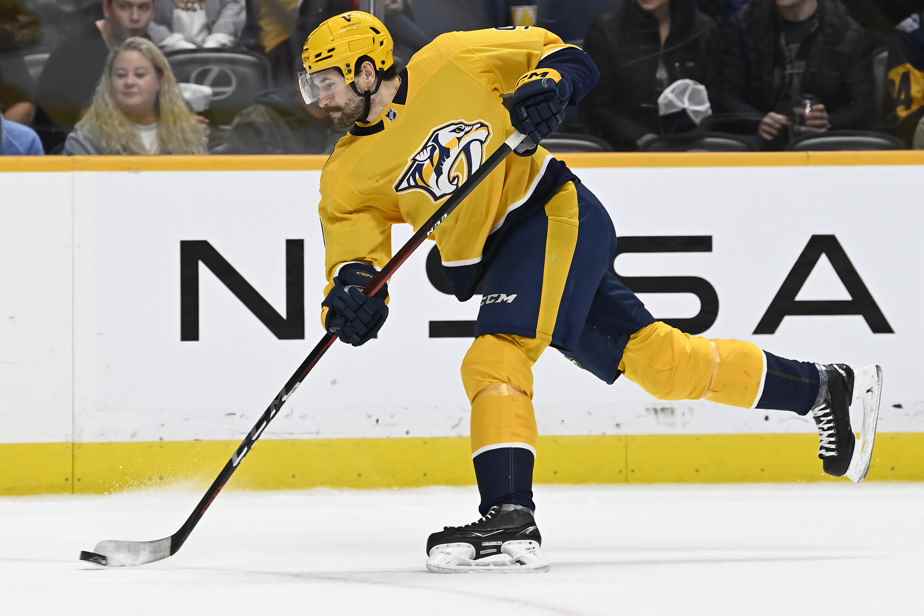Mathias Brunet
It was supposed to be less than a minute before the gong sounded to signify the end of the trade period, in March 2013. The Washington Capitals had failed to make it past the second round for five years despite their “regular” season dominance. and GM George McPhee was desperate for backup. Martin Erat, 31, had been the Nashville Predators’ top forward for several seasons, but he slowed down that winter. McPhee cracked at the last moment and gave up a prospect he knew little about, Filip Forsberg, drafted 11the rank a year earlier, in 2012. Forsberg, 19, was still playing in Sweden with Leksands, in the second division. Erat was dismal at the end of the season, and was injured in the fourth game of the first round.
The Capitals were eliminated in seven games by the Rangers. Erat did not finish the following season in Washington. He was traded to the Arizona Coyotes after about 50 games in a garage sale. Erat had only one goal on the clock. Forsberg is still in Nashville, 10 years later. He has 511 points in 616 career games, including a 42-goal, 84-point season last year. He is bound by contract with the team until 2030.
“It was not a good trade, what more can I say? McPhee told me in a phone interview in 2018. “We weren’t playing well and we were looking to make the playoffs. We didn’t know our young players well enough. Ironically, it was the only time in years that our director of amateur recruiting, Ross Mahoney, wasn’t with us at the trade deadline. He had an engagement somewhere else that day. If he had been there, he probably never would have allowed the exchange. »
Simon Olivier Lorange

PHOTO DAVID BOILY, LA PRESSE ARCHIVES
Ben Chiarot
A defensive defender. Who certainly knew good times on the offensive level, but within a team devoid of any form of drinking quarterback. Catastrophic five-on-five advanced stats. Yet in 2022, Ben Chiarot earned the Habs a first-round pick (2023), a fourth-round pick (2022) and a prospect from the Florida Panthers. It has been widely documented, but the first-round pick is not protected in the event of a win in the first-pick lottery. General manager Bill Zito was certainly in a rush to win. History has taught us: it didn’t happen.
Claude Giroux also cost the Panthers dearly, but at least he was given a key role in the playoffs. Chiarot? Three defensemen have vastly surpassed him in ice time. In the team’s last game, against the Tampa Bay Lightning, he was the least used back of his team (14 min 24 s), making do with four appearances in the third period. A few weeks later, he left for Detroit. A complete fiasco, probably predictable.
Alexander Pratt

PHOTO BERNARD BRAULT, PRESS ARCHIVES
Markus Naslund
In 1996, the Pittsburgh Penguins offense was spectacular. A few names: Mario Lemieux, Jaromir Jagr, Ron Francis, Petr Nedved, Tomas Sandström and Sergei Zubov. Unsurprisingly, they led the NHL in offensive production. It was also an imposing team, which relied on 14 players 6’3” and over. Who knows why, GM Craig Patrick wanted to add another giant to his training. Who ? A first-round pick, Alek Stojanov, who was struggling with Vancouver (0 goals in 58 games). In return, the Penguins gave… Markus Näslund. All in all, Stojanov played 54 games with the Penguins: 45 in the season, 9 in the playoffs. He only scored one goal. Näslund scored 756 points with the Canucks and was named a three-time First Team All-Star.
Jean-Francois Tremblay

PHOTO SIMON GIROUX, PRESS ARCHIVES
Andreas Martinsen and Steve Ott
Is it a panic decision? It is in any case an inexplicable decision. Did it have serious consequences? Certainly not. But the 1er March 2017 will go down in history as the date Marc Bergevin acquired three of the most useless players in franchise history: Steve Ott, Dwight King and Andreas Martinsen. Distant Choices and Sven Andrighetto took the opposite path. Marc Bergevin felt that the Canadian had to get bigger, so he acquired big men. They first hit the ice together on March 4, 2017, and their physical contribution has even been described in glowing terms.
Except hockey isn’t all about body checks. The three players with a profile from another era served no purpose, except to show that the staff of the Canadian was no longer in tune with the hockey of the moment. Ott never played in the NHL again. King, whose talent for getting back on the bench properly had been highlighted, never played in the NHL again. Martinsen played a little in Chicago, before logically ending up in the American League. And the Canadian was knocked out in six in the first round.
Calling all
What do you think was the worst decision made by an NHL general manager during the trade period?
